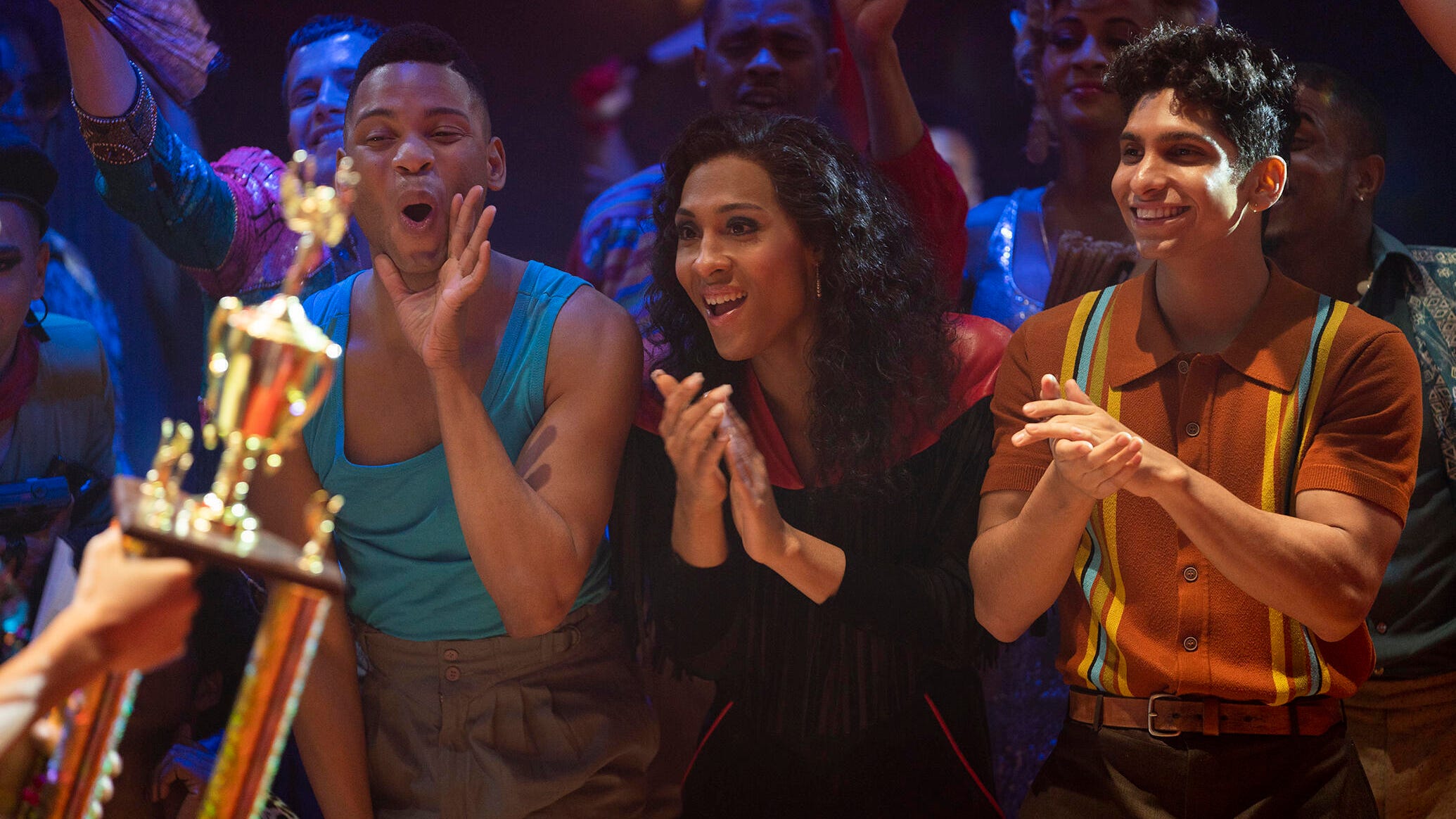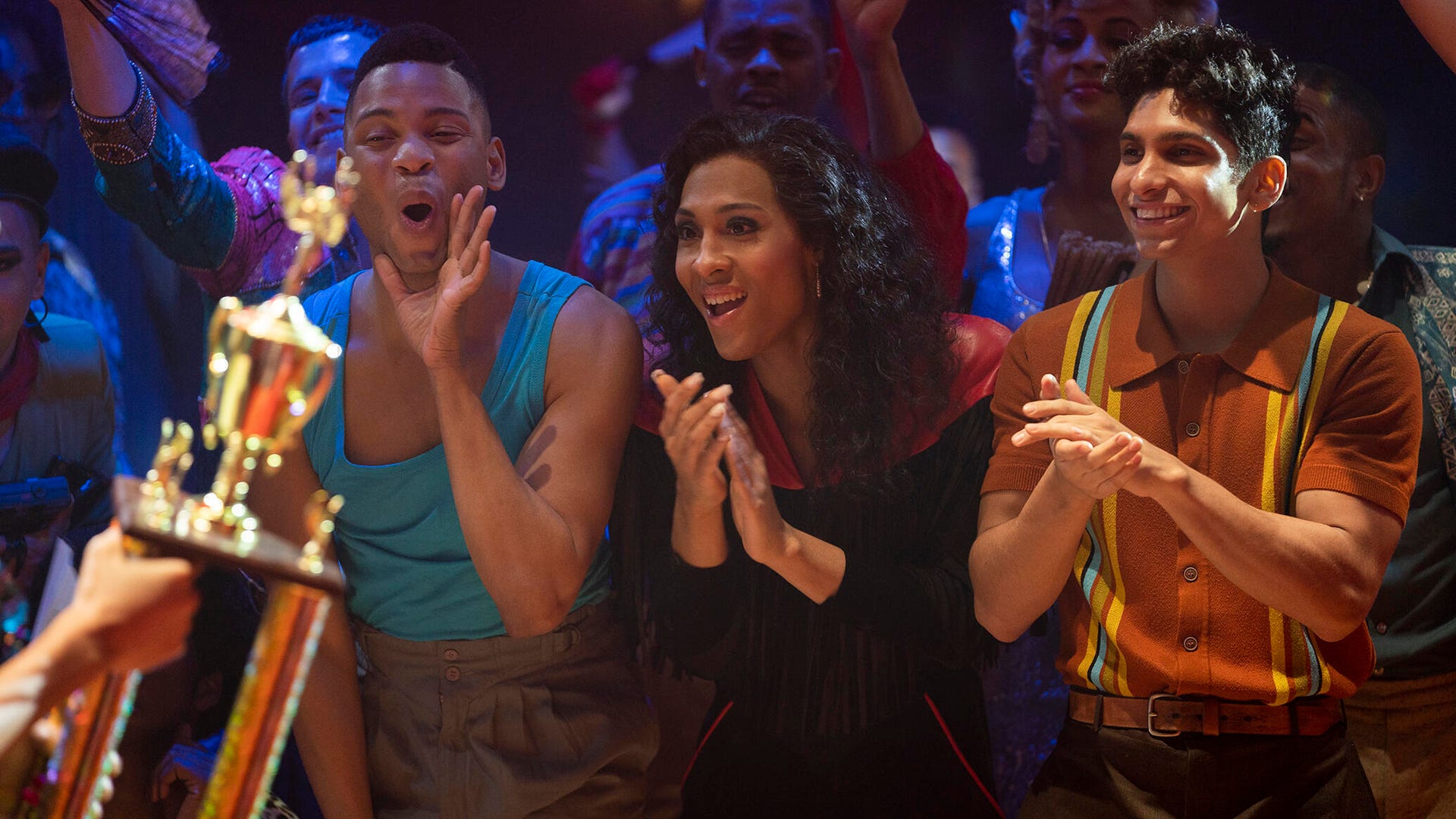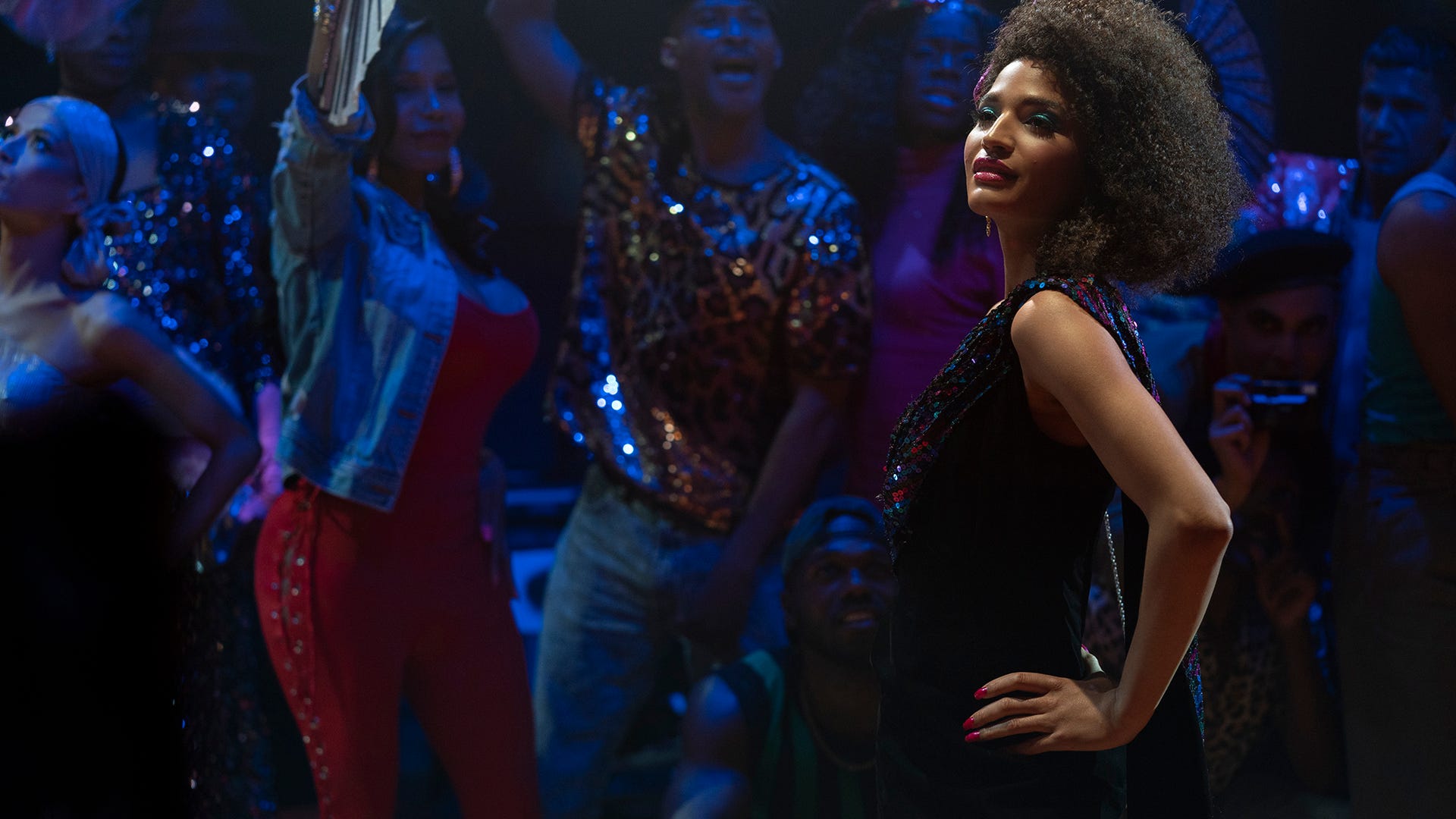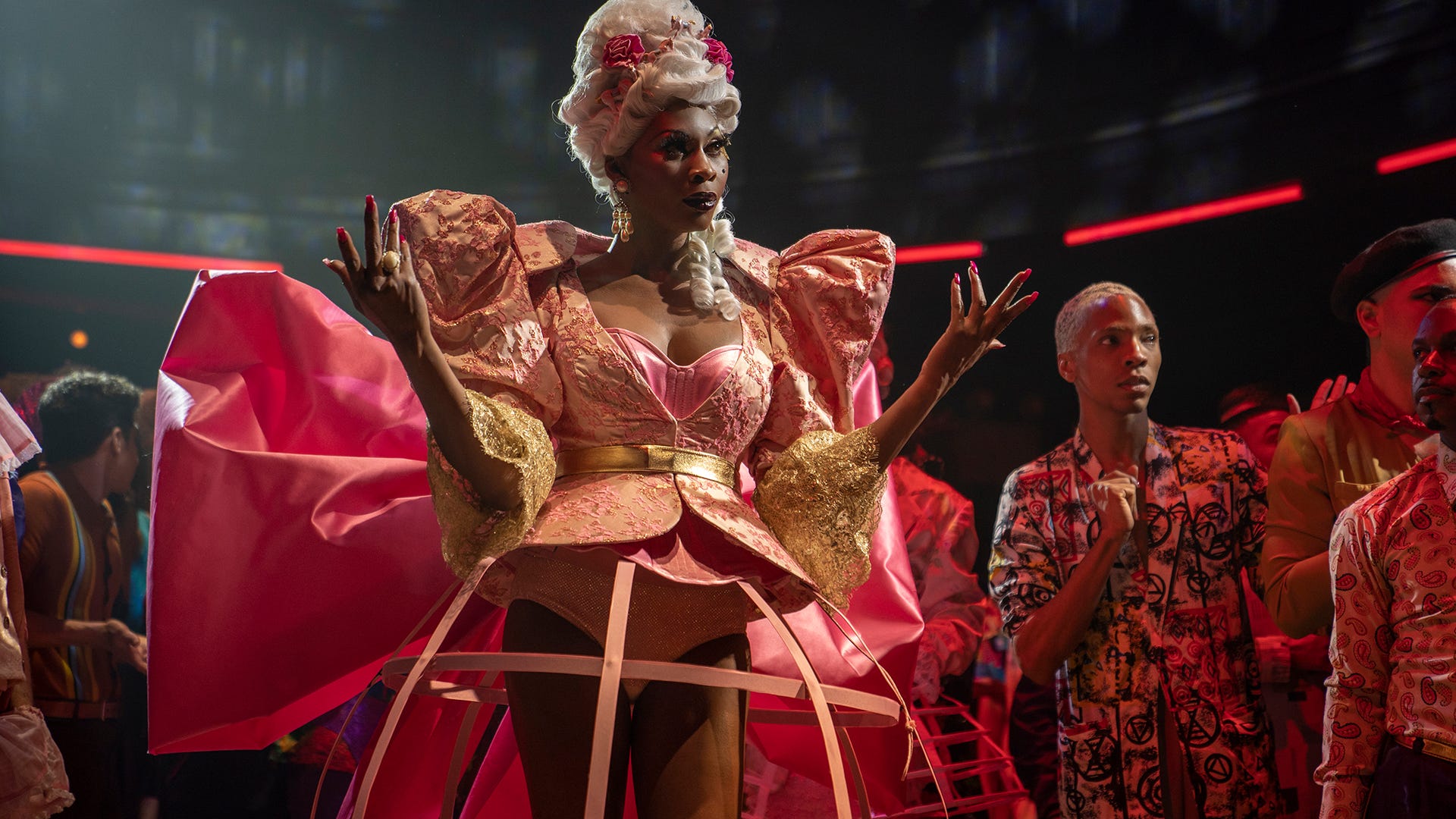
'Pose' Season 2 Asks: What Happens When Your Scene Goes Mainstream?
A time jump finds the House of Evangelista facing the aftermath of Madonna's 'Vogue,' the AIDS crisis, and the fight for love and respect
In its debut season, Pose filmed in locations all around New York, but for Season 2, the celebrated FX series officially set down roots in the Bronx -- a fitting development for the drama, since that's where co-creator Steven Canals is from and where the story's matriarch Blanca (Mj Rodriguez) provides a home to gay and trans youth rejected everywhere else. Pose's home, an industrial-looking warehouse studio the size of a shopping mall, may look bland on the outside one gloomy Friday in early May, but inside, the cavernous facility is practically overdosing on glamour as Rodriguez, Billy Porter, Indya Moore, and Dominique Jackson, along with hundreds of crew and extras, are hard at work filming a scene in the fabulous ballroom. In here, it's 1990 -- three years since Season 1's conclusion in 1987 -- and the vibe is electric, as extras in outrageous get-ups (one is dressed like an Italian clown, with a blond bang affixed to his bald black head) pass time waiting for direction, but upbeat exhaustion fills the air too. They've been shooting for months, conveying how Madonna's "Vogue" landed on the ballroom community like an atom bomb. With Sheila E.'s "A Love Bizarre" zinging through the speakers, they're shooting a pivotal scene over and over until producers on set, including maestro Ryan Murphy sense it's right.
"I want to make sure this looks messy," Murphy said to a cluster of performers facing the intimidating judges' table. Murphy wants the scene to look frenzied and chaotic, so one more time, the contestants in the category sashay and shimmy, and when they're done, onlookers wag their fingers and "Yass!" at what's just happened. "Make it a lot messier!" said Murphy, dressed for hands-on work in a distressed sweater and comfy Nike sneakers. Though he's direct and authoritative, he's nurturing, too, and it shows later when cast members like Jackson coo, "I love you" at him for no reason at all other than he's passing by.

Ryan Jamaal Swain as Damon, Mj Rodriguez as Blanca, Angel Bismark Curiel as Lil Papi, Pose
FXThe meat of the scene gets underway when one character who won't be named here walks the ball floor, doing her best Madonna impersonation.
"Bitch!" Pray Tell (Porter) yells over the mic. "You do have nerve. What are you doing?"
"I'm paying tribute to Madonna, the woman who put vogue on the map!" the offender says, causing everyone in the room to groan, rightfully. After all, voguing and the ballroom scene were already on the map before Madonna -- just not the map the mainstream (i.e. white, straight) world bothered to read. And though that character has to pick up her face after being embarrassed, her eagerness to ride the wave that's suddenly made her world, full of black and brown queer and trans people visible and worthy, raises an interesting question that frames Pose's Season 2. What happens when the scene you created as a safe space for marginalized people goes pop?
Though now a Netflix man, Murphy is still very much hands-on with Pose and, alongside producers Canals, Janet Mock, Our Lady J, and Brad Falchuk, set the season up to examine the aftermath of Madonna's major moment (which, by the way, dropped just as filmmaker Jennie Livingston was finishing her seminal documentary Paris Is Burning about the underground ballroom community). The world's best-selling single in 1990, "Vogue" came accompanied with a stunning black-and-white video -- nearly 100 million views on YouTube today -- which showed her and her "backup dancers" (some of them real ballroom legends) voguing. Overnight, voguing went from an activity known in small queer circles in New York to a globally recognized phenomenon that many still might think Madonna invented were it not for Pose and RuPaul's Drag Race. Madonna's song made the ballroom scene so hip that culture vultures came running to gawk at it in person. But while "Vogue" amplified the art form further than the competitions in Harlem and Brooklyn gymnasiums ever could and subsequently gave lots of unknown queer artists newfound opportunities, it also felt, to some, like theft. People asked: Who was Madonna to colonize and "legitimize" what was already thriving before her? What right did she have to reference Grace Kelly, Jean Harlow, and Marilyn Monroe, effectively whitewashing the scene created by poor black and Latinx people? Season 2 of Pose addresses that tangle of questions -- questions that couldn't come at a more appropriate time than Pride month, when the same major corporations that never would have hired a trans person to work in their stores 20 years ago slap rainbow flags in their retail windows for all to see.
"It's very complicated," Janet Mock, a Pose writer, producer and director, said of the "Vogue" storyline in Season 2. "It gives [us] a chance to have complicated conversations between the characters. Some are like, 'Honey I'm ready for my moment! Where's the audition? I'm ready to become a supermodel!' Others are like 'No, we need to close these doors. We need to barricade it because what's going to happen is that they're going to come in take what's ours and leave us in the dust, and we'll be left here again.'"

Indya Moore as Angel, Pose
FXThat's pretty much exactly what happened after "Vogue" lost its sheen in the pop culture machine. At first, vogue pioneers like Willi Ninja and Jose Gutierez Xtravaganza (one of the dancers in the Madonna video and now a Pose consultant) became celebrities. They were feted by the rich and famous; flown around the world to teach courses and eat fancy dinners in palaces. But when Madonna and everybody else had moved on to the next thing, their fame dried up, and they returned to their previous lives with little more than great experiences and bragging rights. "The question we're asking this season," Murphy said, "is what happens when you think you're in, and what happens when it goes away?'"
Though what's being depicted in Pose Season 2 happened almost 30 years ago, audiences are just now in a place to really consider the dynamics of the ballroom scene going mainstream. This is, after all, the era when topics like cultural appropriation and gentrification are part of everyday conversation and consumers are (allegedly) woke enough to consider where the thing they're consuming comes from and who really benefits from the exposure. "We trace it all the way back to the disco period when black music became mainstream," Ryan Murphy said, noting how, after disco got too popular, people didn't just move on to the next thing but actively burned disco records in stadiums as a form of entertainment. "You saw the straight white male collective rage that the culture got away from them." For queer people and people of color, he said, "it's always been those moments you feel like you're finally invited to the party, you finally have a place at the table, and what we've seen historically is that moment you think, 'They finally see me,' you realize they actually don't."

Dominique Jackson as Elektra, Pose
Of all the players in the Pose cast, Porter might be the most qualified to unpack the complexities Season 2 contends with. "I was there," he said. Although the 49-year-old didn't actively participate in the ballroom scene, he lived in New York City at the time and knew the world well through friends. And while he acknowledges that this story raises complicated issues, it's also important to give credit where it's due. "While there are things about appropriation that are problematic for me, it can't go unsaid that [Madonna] was totally present for us during the darkest of times," Porter said, referencing how "Vogue" not only popularized voguing but gave Madonna, the biggest star in the world, an even wider platform to support gay rights and AIDS activism when very few public figures would. "This is not about Madonna-bashing. We honor that contribution to this story. She's part of what got us here." A friend of Ryan Murphy's, Madonna granted him the rights to her music for the show. "Madonna was a very quick yes," Murphy said. "She believed in the themes of the show and particularly the actors."
Of course, Pose's second season will address much more than the impact of "Vogue"; the AIDS crisis will hit home hard for at least one major character. They all will reckon with the realities of violence against trans women of color, an issue more vital now than ever. There are, thankfully, some love stories to balance all the heavy themes, and lots of laughter too as Blanca, Elektra, Angel, Pray Tell, and the rest of the children serve face and lewks in the ballroom. And even as they grapple with the new reality that their scene has gone mainstream without their input, they endeavour to look beyond simply surviving and consider fully thriving.
That's also true for the talent on this Bronx set -- a workplace that's given an unprecedented number of trans people jobs, and for some, the job of a lifetime. That's how Pose's metastorymakes this telling markedly different from how stories shining a light on subcultures have played out in the past: This time, participants are afforded opportunities beyond fleeting exposure, as well as voice and agency. "This," said Dominique Jackson, "is a reminder this scene was here, we didn't die out, we've always been there. The ballroom community is a part of me. It's where I grew up, where I learned to survive. These are human beings; these are people, with feelings. This is about respect."
Pose Season 2 premieres June 11 at 10 p.m./9c on FX.
